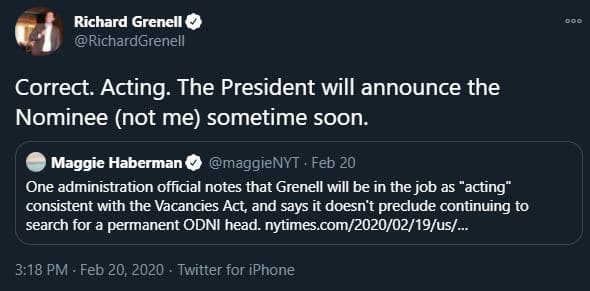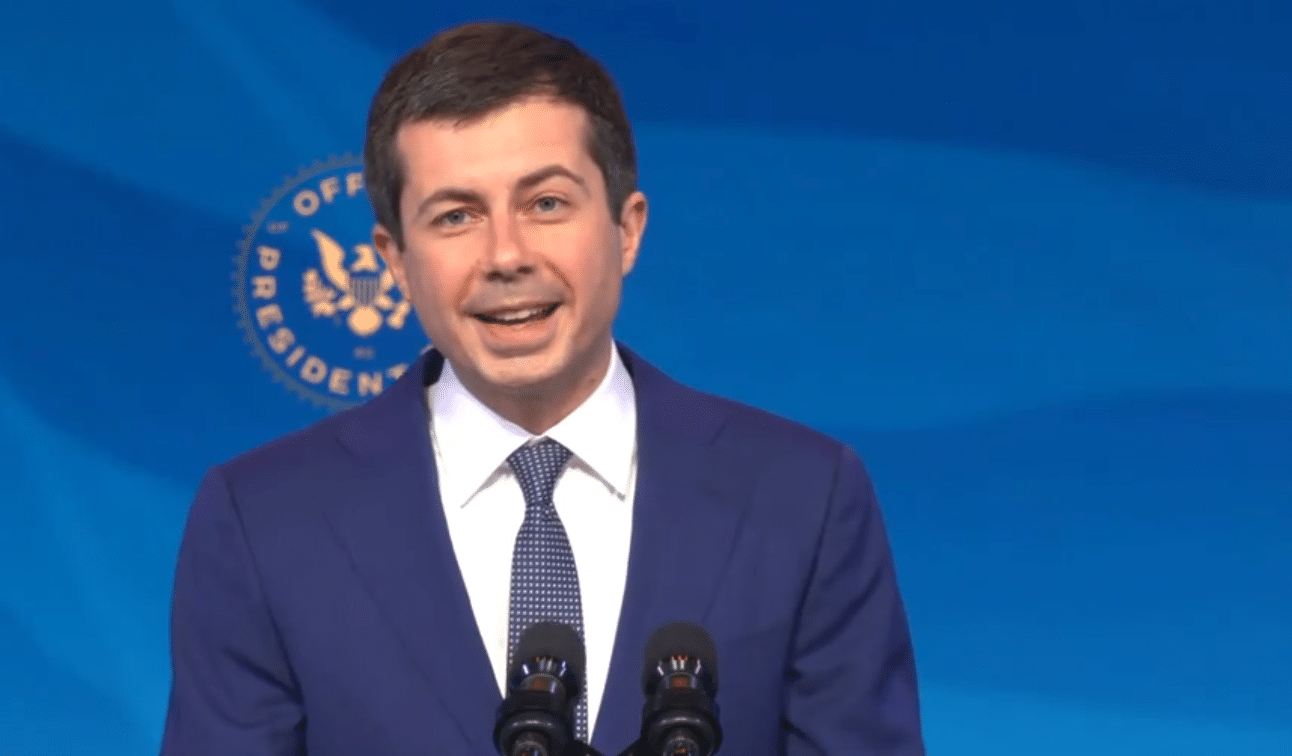The difference between Pete Buttigieg and Richard Grenell’s history-making cabinet roles, explained

Pete Buttigieg and Richard Grenell (Getty)
Former presidential hopeful Pete Buttigieg this week made history as the first gay man nominated for a full-time cabinet post, prompting howls of anger from Trump supporters.
Republican-supporting outlets such as Russia Today, Fox News and The Federalist have sought to shout down LGBT+ celebrations of Buttigieg’s appointment, arguing that it “erases” the legacy of controversial gay Trump official Richard Grenell, who temporarily filled the cabinet role of acting director of national intelligence.
Grenell himself has fuelled the attacks, calling for Twitter to censor PinkNews last month for correctly reporting on the historic nature of the then-prospective Buttigieg appointment.
The disingenuous attacks largely rely on decontextualizing headlines and exploiting people’s lack of knowledge of the US cabinet system, eliding the clear differences between the two roles and appointments.
Richard Grenell was a cabinet seat-filler for three months
It is true that Republican operative Richard Grenell temporarily filled a cabinet post for a three-month period between February and May 2020. It is also true he was the first out LGBT+ person to do so.
The Trump loyalist was appointed to the interim role when Donald Trump sacked the previous office-holder Joseph Maguire for briefing lawmakers about Russian election interference.
However, the role was only ever offered to Grenell on an interim basis, meaning the administration was not required to seek Senate confirmation. His successor, John Ratcliffe, was picked just eight days after Grenell took up the interim role in February, leaving him to keep the seat warm while Ratcliffe was confirmed by the Senate.
Grenell attended just one full Cabinet meeting, on 19 May, just days before Ratcliffe took over.
Although his supporters have since sought to elide the nature of his appointment, Grenell very clearly spelled out the difference at the time, explaining via Twitter: “Correct. Acting. The President will announce the Nominee (not me) sometime soon.”

Richard Grenell clearly underlined the difference between an interim and full-time appointment in February
Given the temporary nature of his appointment, perhaps unsurprisingly Grenell had little long-term influence over policy, and he bowed out of the role in May with few – if any – concrete accomplishments.
While he may have hoped for a full-time cabinet job, he definitively did not get one under Donald Trump.
Why the appointment of Pete Buttigieg is different
All of this is significantly different from Pete Buttigieg, who – if confirmed by the Senate – will be the secretary of transportation.
Not a seat-filler, not keeping a seat warm for somebody else, and definitely not a patsy dubiously parachuted in on a record of partisan compliance – the full-time, actual secretary of transportation.
He will have a personal mandate to shape the Biden administration’s transportation policy over the next four years, heading up a department with a $72bn budget and 58,000-strong workforce, placing him at the core of policy work on climate change, transport infrastructure and innovation.

Former South Bend, Indiana mayor Pete Buttigieg
As Joe Biden said in the announcement: “I am nominating him for secretary of transportation because this position stands at the nexus of so many of the interlocking challenges and opportunities ahead of us.
“Jobs, infrastructure, equity, and climate all come together at the DOT, the site of some of our most ambitious plans to build back better. I trust Mayor Pete to lead this work with focus, decency, and a bold vision – he will bring people together to get big things done.”
LGBT+ activists see a role model in Pete Buttigieg. In Richard Grenell, they see a disingenuous gaslighter
Many of the celebrations from LGBT+ groups have noted the record of Buttigieg, a military veteran and small-town mayor who has spent much of his time on the national stage shining a light on LGBT+ issues.
By contrast, Grenell leaves behind a toxic and deeply controversial legacy. While serving as ambassador to Germany in 2018, Grenell significantly harmed relations with the country’s government after he told a far-right publication he would work to “empower” anti-migrant conservative movements across Europe.
Ahead of the 2020 election, he took on the role of Republican ‘outreach’ to LGBT+ voters, and was dubbed “Gaslight Grenell” for his insistence that the Donald Trump presidency has been good for LGBT+ people despite a slew of hostile policies.
On the campaign trail, the official has frequently touted a supposed campaign to decriminalise homosexuality globally, which he announced himself via a press release in 2019 – but there is little evidence to suggest it exists, was ever allocated any funding, or actually achieved anything.
Gaslight Grenell strikes again. pic.twitter.com/wwXMqHSvuw
— Human Rights Campaign (@HRC) August 27, 2020
Grenell has also given contradictory accounts about the perceived importance of his cabinet role – stressing on one occasion that Donald Trump “didn’t care” about his sexuality, despite claiming on another to have had a deep and meaningful conversation with the president about how important a symbol the appointment was.
Even in the dying days of the Trump administration, Grenell has stood in contrast to the softly-spoken Buttigieg, opting to explosively lash out at reporters at press conferences on several occasions.
The differences, then, could not be clearer.
In Pete Buttigieg, young queer Americans have a symbol of what you can achieve by believing in something. In Richard Grenell, they have a stark warning of what you can become by believing in nothing.

